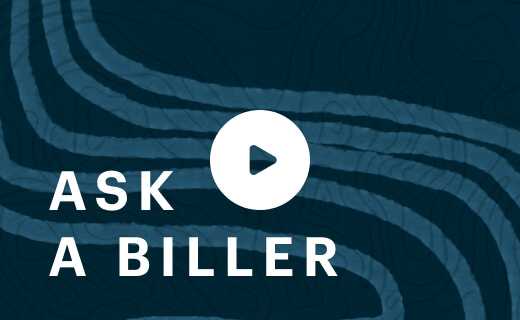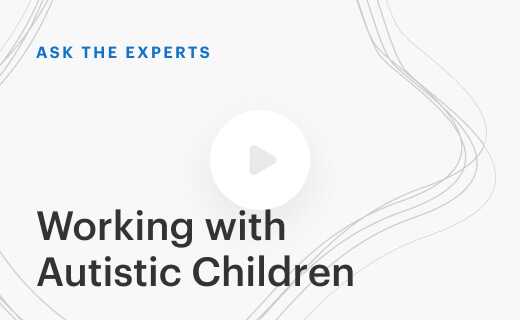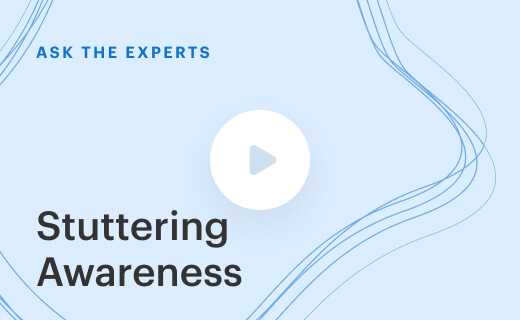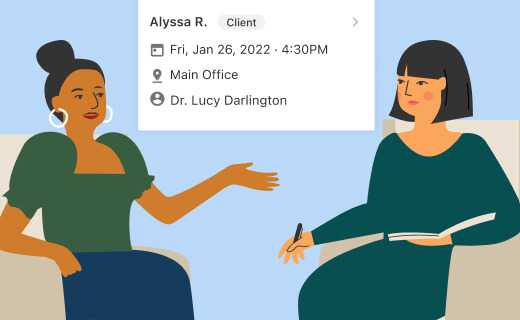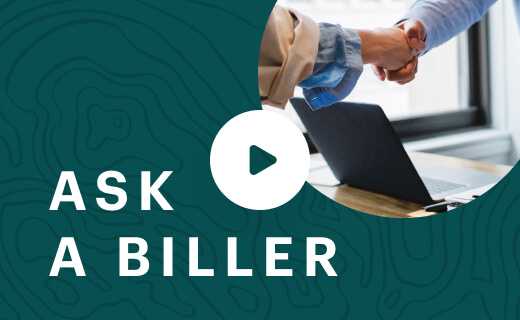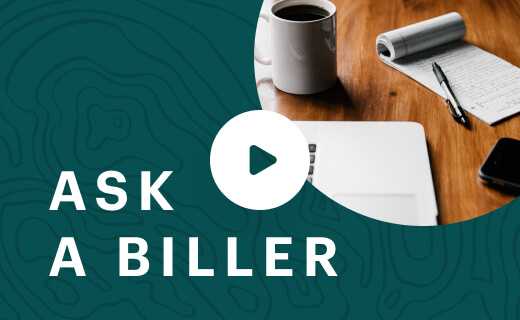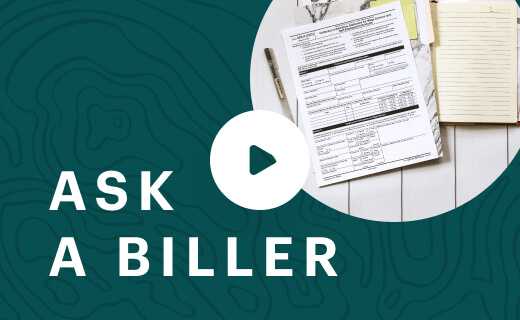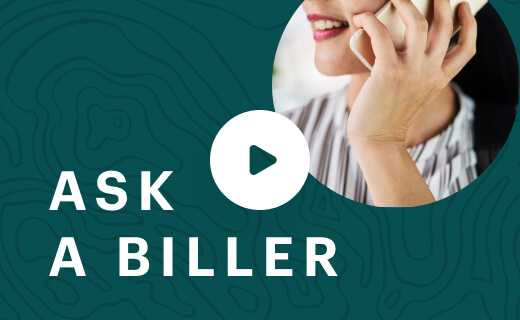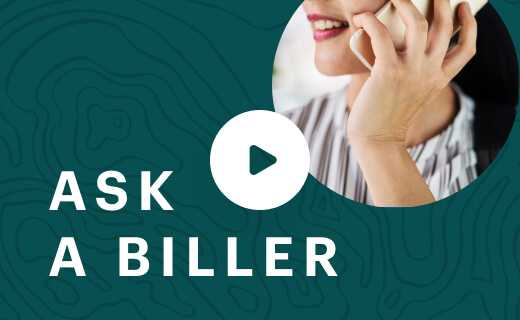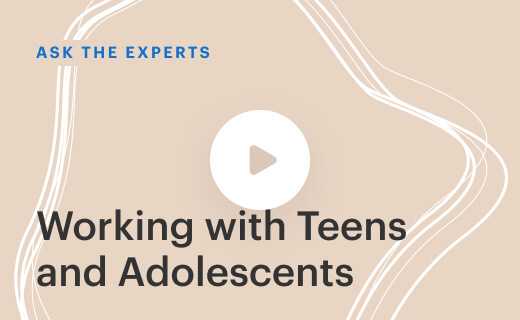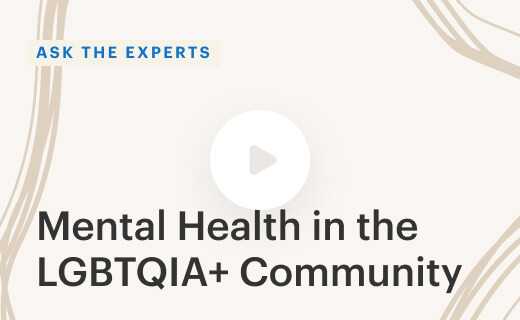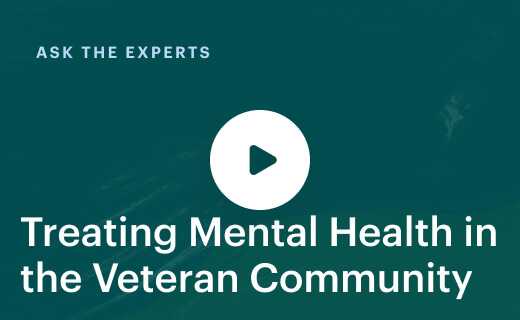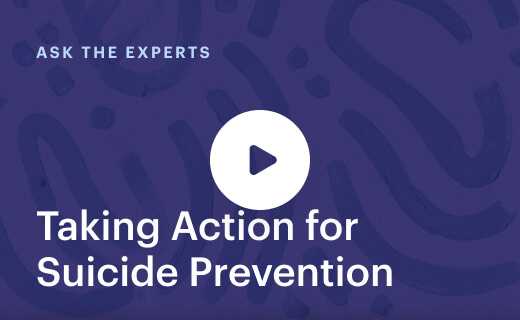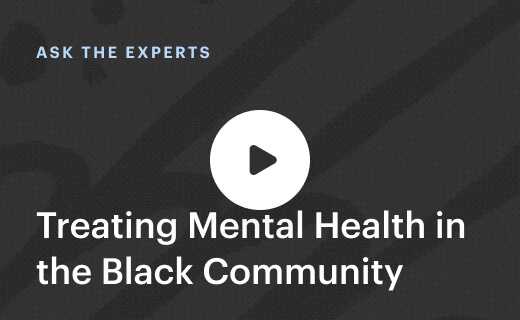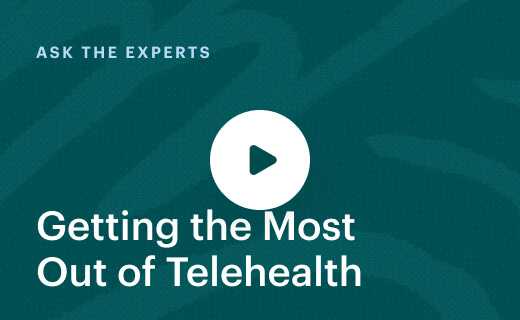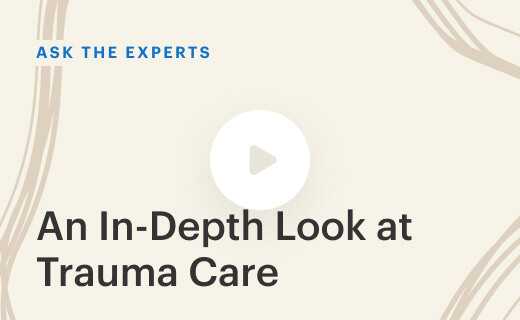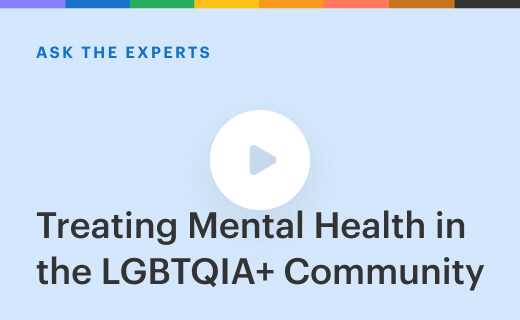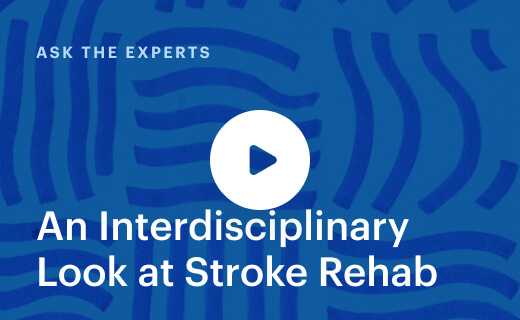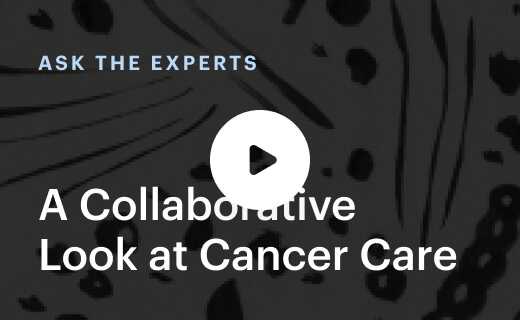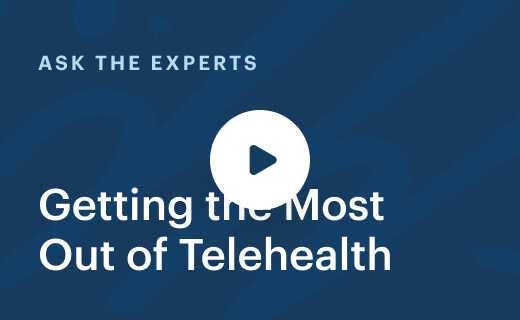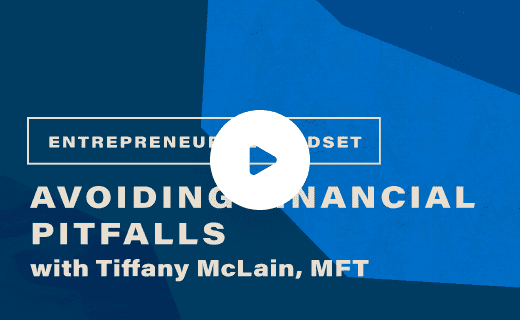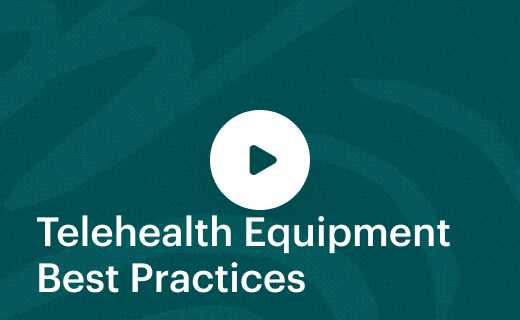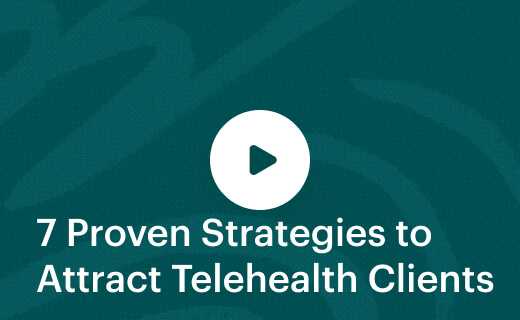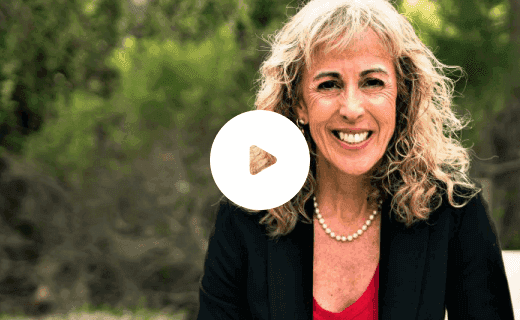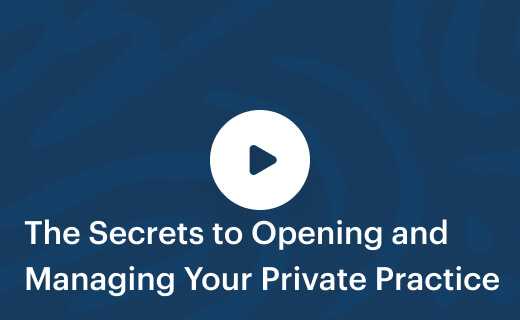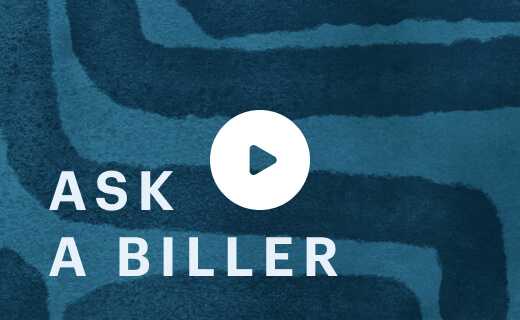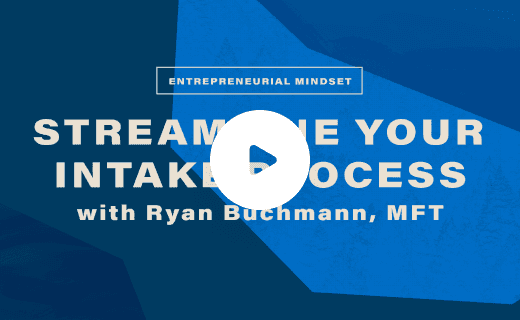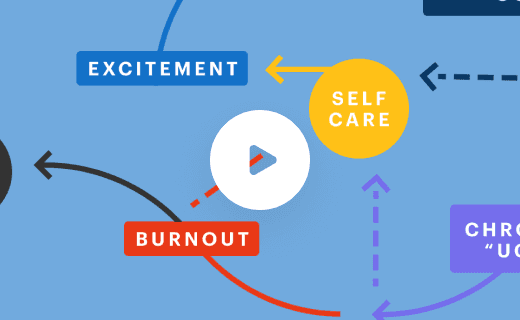An Interdisciplinary Look at Stroke Rehab
Free 30-day trial, access all this & more:
Want to know about other great webinars?
Join stroke rehabilitation experts Sierra Corbin, MS Ed, CCC-SLP, Cassandra Kandah, PhD, and Tiffany Christine, MOTR/L as they discuss ways different practitioners can best support stroke patients during their recovery.
Moderated by Michael Jankowski, OT, this expert panel covers topics ranging from working with stroke patients during COVID to best treatment methods. This panel of experts also look at how practitioners from different backgrounds can successfully collaborate to further improve recovery after a stroke.
If you’ve ever been interested in working with patients who are recovering from strokes, this webinar provides insight on what to expect, how to get started, and advice on best practices. So no matter where you are in your practice, it’s never too late to start learning and get involved with stroke recovery.
- Introductions
- What are the main changes you have noticed in patient care since COVID and how has this impacted your work?
- What are best practices that each of you have found when working with this population? Are there any recommendations for someone getting started?
- How do you find and sustain the relationship with those on the interdisciplinary team to provide more complete care?
- How do we best support family members who are helping their loved ones that have suffered from a stroke?
- What role does neurofeedback play in stroke recovery for occupational therapists?
- What best practices serve for long-term recovery?
- Just some final thoughts and closing thoughts you have today?
Michael Jankowski: Welcome everyone to the Ask The Experts webinar and Interdisciplinary Look at Stroke Rehab. My name is Michael Jankowski, and I am the Occupational Therapy Clinical Specialist at SimplePractice, and I will be facilitating this conversation. But we’re all super excited. We’ve got a great group of panelists here and let’s get started. Yeah, so a little background about myself. My name is Michael Jankowski, I’m a Pediatric Occupational Therapy by training, but I currently work with SimplePractice as their Occupational Therapy Clinical Specialist. My background is predominantly in pediatric occupational therapy, so super thankful to have all these professionals here giving their perspective and to have Tiffany in OT with experience in stroke rehab as well.
Michael Jankowski: So just a little layout, we’re going to take a couple of minutes. We’ll introduce all the speakers here and then we’re going to get into those questions you guys submitted. Everyone who submitted a question, thank you so much. We’re going to be responding to those questions today, and then towards the end of the presentation, we’ll wind down and end with some final thoughts. Perfect. First, I would love to introduce Dr. Cassandra Kandah, and I’m going to give her a couple moments to introduce herself here.
Dr. Cassandra Kandah: Hi everyone, thank you so much for joining us. My name is Dr. Cassandra Kandah, I’m a Licensed Clinical Psychologist. I specialize in the area of health psychology with the background as well in neuro-psychology. I spent a lot of time helping individuals and their families who have survived stroke and subsequent changes in their thinking.
Michael Jankowski: Welcome, Dr. Cassandra. We’re happy to have you. Next, we’ll go ahead and introduce Sierra Corbin.
Sierra Corbin: Hi, I’m happy to be here, I’m Sierra Corbin. I am a Speech Language Pathologist in Eugene, Oregon. I supervise graduate students at the University of Oregon and I also run Eugene Speech Therapy, which is a private practice that specializes in working with people with acquired disorders, primarily, adults. We work in all areas, cognition, language, swallowing, voice. Yeah, I’m happy to be here.
Michael Jankowski: Well, thank you. Thank you, Sierra, we’re happy to have you. Let’s introduce Tiffany Christine Tary next, a Occupational Therapist.
Tiffany Christine Tary: Hi everyone, thank you so much for joining us. It’s a pleasure. I’m an Occupational Therapist, I practice here in Tennessee. I work in subacute care and long-term facilities, which is a fancy way of saying nursing homes. I really enjoy what I do, and I tend to see our stroke survivors about four to five months post stroke. But sometimes we get someone who’s only a week or so out of the stroke. This is primarily the field or the area I’ve been practicing in so far is subacute care. Like my bio says, I’ve been practicing for three years. I’m very passionate about OT and I see firsthand every day the impact we are able to make on our clients.
Michael Jankowski: Awesome, well, we’re excited to have you, and again, I’m really just excited for this Ask The Experts. I know all three of you have a lot of experience in this topic, and so we’re looking forward to just diving into it and learning more. Let’s go onto the first question. I would like to open this first question to all the panelists. What are the main changes you have noticed in patient care since COVID and how has this impacted your work? I’m just going to move down the line based on the order of my screen, so let’s start with Dr. Kandah first.
2. What are the main changes you have noticed in patient care since COVID and how has this impacted your work?
Dr. Cassandra Kandah: Absolutely. The first thing that was a major change for us was the massive shift from in-person to telehealth. Initially, it was a big adjustment, but I am very happy to say at least from a behavioral health perspective, that over time we saw a joyful shift to the telehealth experience.
Michael Jankowski: I’m sure, I’ll let Sierra and Tiffany speak here in a moment, I’m sure that we’re going to hear that a lot, that shift to telehealth has been a big change for everyone. And some practitioners in my experience were already operating from a telehealth model and some around March of last year had to transition to that really quickly. I’ll be excited to learn everyone else’s perspective. Thanks for sharing that Dr. Kandah.
Sierra Corbin: Yeah. I would say there are definitely positives when it comes to, yes, we all made a huge shift to telehealth, at least, when we’re in the outpatient setting. We are able to see them in their homes, they can eat the food in their own kitchen if we’re doing swallowing therapy. There are positives, but it’s also been a huge shift in how SLPs do provide therapy. I think that one of the challenges we have in our field is less standardized care. I think that was even worse during COVID because it really depended on where you worked and what the new protocols were. I know, for me, it’s been hard to get diagnostics, for instance, for my clients. I rely on diagnostics for swallowing and for voice.
Sierra Corbin: For example, some hospitals require a negative COVID test before the assessment, things like that, or ENTs in town just didn’t see people for a while because those procedures are considered higher risk. It really has changed our care. I no longer work in acute or progressive care, but I know that those therapists had to really change the way that they provided therapy from the door or no longer getting those swallow assessments. They’re doing clinical bedside assessments, which are just not what we want for best care. Yeah, but it’s been a huge learning curve and I think that we’ll take what we have from this past year, the positives from it, and hopefully keep those aspects.
Michael Jankowski: That’s some really good insights, Sierra. I’ve been thinking about that too, that students right now, who are whether it’s in speech therapy, psychology, occupational therapy, what are they learning and how are they going to take that knowledge about telehealth moving forward? But thank you so much for those great points and input. Tiffany, what about you? What is your opinion on this?
Tiffany Christine Tary: I work in a nursing home, subacute care as I mentioned, we have continued to work throughout the pandemic. We’ve just had to use PPE and go with it. I actually acquired COVID at work from the environment. Yeah, and so I had to miss work for about, yes, for a week and a half. Thankfully, I wasn’t severely affected. I was okay. We did have some staff members working one-on-one with our residents, patients, clients, and some of them were hospitalized for several weeks, unfortunately. But so I would say for the residents, our patients were not getting you admissions. We didn’t get new admissions for a while. We didn’t really get to see patients who just had a stroke, right? Most of the residents that have had a stroke are already long-term care.
The biggest change in this is isolation. They stay in their rooms, curtain pulled, and it’s just the TV and a window. And we come in with these weird looking astronaut outfits to them. The big masks, gloves, and gowns, and it’s like we’re not even human anymore to them. It’s been very depressing [inaudible] for that because they’ve shared that with me. They’ve told me, “I don’t want to get out of bed. I don’t want to do anything. Why should I? What’s the point? I’m in my room locked away and I can’t see my family.” It’s been difficult. Then we were very short-staffed, many of our staff members acquired COVID, and like I said, some of them were hospitalized for several weeks.
So we were so short staffed, even the therapists, such as I were just performing CNA duties, providing water, changing briefs, feeding them. Not really [inaudible] and just caring for them, which is fine. Which is good, we were all able to pull together. I would say isolation [inaudible] for a while I didn’t have hours. Financially, I was struggling. We weren’t getting new admissions or our residents were sick in quarantine, there’s really no one for us to see. Really, the pandemic has really had a large impact on my setting. But, thankfully, I would say actually maybe about 80% of our residents did acquire COVID. I would say from my knowledge, about four of them passed away, unfortunately.
Had several comorbidities and they were hospitalized, it’s very sad. We did, I think, lose about four or five. The rest of them recovered, and we were able to just have therapy right there in the building. We were able to see them right there at speech therapy, physical, and occupational therapy. Then, recently, we’ve had a psychologist coming in now and doing rounds, visiting with the residents, trying to help them through the depression and anxiety they’ve experienced losing their friends who live in the nursing home. And losing family they were never able to see who passed away because of COVID. Yeah, it’s had a huge impact.
Michael Jankowski: I appreciate that insight, and I’m sorry to hear about your experience with COVID and your coworkers. I’m glad you had a full recovery though. Again, I really appreciate your insight and showing both sides of COVID, and we see ways that we’re really advancing as professions. We’re really thinking outside the box to advance telehealth and to really provide that and provide that care that our clients need. But at the same time, there is those scary statistics as well and those scary things that are happening with COVID. Thank you so much for that insight, Tiffany, and again, we’re happy you were able to make a recovery there and happy you can be with us today.
Well, let’s go on to the next question. The next question, and again, I would love to open this to all the panelists, so what are best practices that each of you have found when working with this population? Are there any recommendations for someone getting started? Sierra, let’s start with you on this one.
3. What are best practices that each of you have found when working with this population? Are there any recommendations for someone getting started?
Sierra Corbin: Sure. Best practices, obviously, first, we want to talk about evidence-based practice. So making sure that you’re up on your continuing education, going to the research, using your expertise, and then the client preference. That’s really important. I think that collaborating with the whole medical team is also really important. They’re not in your setting, even if you’re an outpatient, there’s a team following the clients. They have a primary care physician. They have allied professionals they’re seeing, so making sure that you’re communicating well with them. Recommendations on getting started, I would say I’m not sure. Make sure that you feel comfortable. At least for SLPs, I know that our field is so broad. You pretty much graduate with a foundation, and then you start to learn in your clinical fellowship year and your first years as a clinician how to provide best practices in a real life setting.
So making sure that when you get it, that client with a new diagnosis, that you are doing the continuing ed, going to the resources so you know how to actually treat them. It can be really tough when you’re in like a SNF skilled nursing and you’ve got productivity standards and you’re super busy and overwhelmed, especially, in COVID. To do that, so find the resources. Today, there are so many groups you can be a part of that offer the research for you in an easy to digest way. I think just trying to stay up with all of that and stick to your ethics. Sometimes we work in settings where we have administrative supervisors who try and steer us a certain way, but sticking to your ethics and knowing what those are is really important.
Michael Jankowski: That’s a really good point, really, really good point. I’m glad you touched on that. Tiffany, what about for you?
Tiffany Christine Tary: Well, so we are taking in new admissions now and we actually have… I have a client who is post-stroke one week. I would say best practice is to use standardized testing as much as possible to go ahead and start working on the effective side, if there is an effective side. It depends on the type of stroke, how it affects the person. I would say that it’s also good to collaborate with the other staff members, CNAs and nurses who may be present. After my evaluations and the day after, I went ahead and contacted the CNAs and gave them an update on the visual impairments, cognitive impairments, physical impairments. I think that’s very important, and I told them what I thought that client needed in order to start their recovery.
Just simple things like sitting out of bed, sitting up supported during meal times, little things that they can do. Another thing is evidence-based practice, as Sierra was mentioning, and always it’s at your fingertips really. You can look up research articles very easily on Google. The American Occupational Therapy Association also has articles and journals that we, as practitioners, can easily access. I would say if you’re getting started, make sure you’re using the resources your association provides, standardized testing, every report too, and even every treatment, why not? You can just do a quick standardized test to see the progression, and collaborating with other staff members to make sure that they’re getting the best care possible.
Michael Jankowski: Yeah. Again, one of the reasons I just love this panel we have today is that interdisciplinary look. We appreciate having everyone’s perspective from your own background and niche. But also as Tiffany said, how we can collaborate together, how occupational therapists can collaborate with psychologists, with nursing staff, with speech therapists, and other professionals in this domain. Thank you for that, Tiffany. Dr. Kandah, what about you?
Dr. Cassandra Kandah: Yes, that’s been yes to what Sierra and Tiffany have been saying. I agree to all of those things. Within the field of behavioral health, using evidence-based approaches, of course, when it comes to the therapeutic care of these individuals and their families. Interdisciplinary approach is definitely a best practice when it comes to this. It really is because a portion of what we do is help facilitate the overall treatment goals of these [inaudible]. A major part of that is the interdisciplinary care aspect. The recommendation for any client and their families that are just starting off on this journey of dealing with life after stroke, it’s going to sound ridiculous, but a notebook.
Dr. Cassandra Kandah: Bring a notebook or have a note section on your phone where you just have a list of who you have been talking to, what their recommendations are, and any follow-up questions you might have. You can also use it as a way to help prepare for your appointments. Because I think the one thing that I see over and over again, within any of my chronic illness patients with strong Parkinson’s, you name it, is this sense of feeling overwhelmed by the sheer amount of information coming your way, and even the language that’s being used. I know we’re going to talk about aphasia. A lot of people are like what the heck is that? My biggest recommendation getting started, get a notebook and take notes at your sessions.
Michael Jankowski: I like that, and I really like how all three of you focused on that interdisciplinary approach, and realizing that we have our experts as our background and our professions. But when we really work interdisciplinary, that’s going to benefit the client the most and that’s going to help their recovery. Yeah, we’re really, really excited that you guys touched on that point, and yeah, it’s a really good point you guys bring up. Well, let’s look at the next question we have coming up. Let’s see, we’ll do next slide please. Perfect. How do you find and sustain the relationship with those on the interdisciplinary team to provide more complete care?
4. How do you find and sustain the relationship with those on the interdisciplinary team to provide more complete care?
Tiffany Christine Tary: I really like to do in-services. Now in-service, in my opinion, can be very… it doesn’t have to be a meeting where everyone joins in for 30 minutes. It can be on the spot, so that’s what I do. The in-services that I like to do really talk about what the services are or our therapeutic approaches are with the clients so that [inaudible] other staff members can see what they’re doing. Then I also like to educate them on the programs that I’m currently developing or the occupational therapies are developing. That way we’re all on the same page. I also always ask anyone, even if I’m doing an in-service and I consider myself an expert on that topic, I still ask, “What do you think? What do you think about that? Do you have any experience or questions?” Because I want to be approachable and I want people to understand and value what we’re doing as OTs.
I think if we come off closed off or don’t give people opportunities, well, that doesn’t make any sense. They were not really going get anywhere and I see that all the time. I see that all the time, “It doesn’t make sense. Why are they doing that? Why are they doing that?” Then there’s no follow through with these interventions. But if we can take the time as occupational therapists to explain, “Hey, this is why we’re helping clients with self-care. This is why I’m using this approach or this level of queuing.” Then, hopefully, they’ll understand that and try to implement that themselves when they approach the client. That’s my approach is in-service is educating, asking for feedback, even if it’s not positive all the time. It’s fine, that’s how we grow as a team. Yes, so that’s my approach to it.
Michael Jankowski: I really like that. I really like that. Yeah, my background is occupational therapist. One thing you and I, Tiffany, have talked about before is how we’re constantly explaining what our profession is. Just because we don’t have the same name recognition that speech therapy, physical therapy, or psychology has. So really like your approach of offering in-services and being open to that communication too. Not saying this is the only way it has to be done, but we both want this client to succeed. We want them to return to their prior function. How can we best do that? Awesome. Awesome. Dr. Kandah, I’ll go to you next on this question.
Dr. Cassandra Kandah: I love this question. How do you find and sustain the relationships with those on the interdisciplinary team as to provide more complete client care? It’s consistency, a lot of consistency. Sometimes all you do need is one call, maybe one follow-up email, and that’s fine. But there are those cases I know that we’ve all seen where there needs to be even like a weekly chat, “What’s going on with this individual? How are they feeling?” I’m sure each of us have seen how depression will interfere with any of the exercises you’re trying to get the clients to do, or anxiety can interfere with those aspects. It’s through consistent communication with those more challenging cases that really can help an individual accomplish the goals that they need to.
Michael Jankowski: Very well said. For you, Sierra?
Sierra Corbin: Yeah, this is such a good question, and I think how it’s interesting, Mike, how you lumped SLPs into these other really well known at the forefront therapies. Because I feel like SLPs often feel like we’re not being seen and we often have to continually educate about what it is that we do. I’ve experienced this when I was in the SNF. A nurse would say, “Oh, I thought you only did swallowing.” It’s just it’s always a shocker when you hear stuff like that. A lot of it is one-on-one education. Like Tiffany was saying, being approachable, easy to work with so that you can maintain those good relationships. People will come to you to ask you questions about a client care.
There’s obviously staff meetings, rounds, wherever it is that you work. I am now an outpatient, so I’ll go by, I’ll call. But I also think a really important part of this is learning and understanding what your team does themselves. If you don’t understand what they do, you’re not going to be including them. You’re not going to be referring to them. So go to the dietician, ask them what it is that they do. You know what I’m saying? And that way it can be more cohesive.
Michael Jankowski: I like that. One thing as I’ve heard you, all three of you talking, one thing that resonated is I think I’ve heard a lot of people mention that during COVID, we’re just seeking interaction because of all this isolation. I definitely see a parallel in that we’re not able to interact the same way we were pre-COVID. But also as we’re talking, that interaction is so important, that interdisciplinary approach is so important on that client’s rehab team to help them in their recovery. Because if we don’t have that, then that whole picture is not going to be addressed and all those areas and deficits will not be addressed. I’m glad to hear you guys touch on that, and yeah, you guys brought up some really good points. Let’s go onto the next slide, question four.
Michael Jankowski: Could you talk a little bit more about the assessments when working with telehealth and not having assessment tools? So going back to what we addressed at the beginning, thinking outside of the box. We know in an ideal scenario, we’d be working with a client, maybe in person, we could apply this assessment. But that’s not always going to happen in the telehealth model, and based on just where we’re located, we might not have those assessment tools. Yeah, just how have you thought about outside the box? I’ll talk to you a little bit more about how you’re doing these assessments over telehealth, but how you’re doing that as well if you’re not having assessment tools. Let’s go ahead, let’s start with Dr. Kandah.
Dr. Cassandra Kandah: There are actually quite a lot of assessments online and virtually, and a lot of these companies that create psychological assessments have given us a ton of access to it. Initially, it was a lot of, “Well, I didn’t know that was out there. Oh my God, that, actually, that is a thing?” I can remember having to administer personality tests virtually, and it was one of the easiest things I’ve ever experienced in my life. I’ve never been happier to be able to admit into that. Like how we adjusted initially with COVID, there was an initial like, “Oh my God, learning curve.” But then over time, “Oh my God, we do have a lot of these online, and thankfully, with SimplePractice made it very easy to administer those assessments as well.”
Now I know it’s a little different with neuropsychological assessment. There are thankfully a good number of virtual assessments. But, unfortunately, to a certain degree, there are… from what I understand, I do not practice this regularly, a lot of neuropsychological testing does need to be in person. That would be a difference within our field where most of the time a psychologist can administer their assessments virtually.
Michael Jankowski: Interesting. I’m curious, just as a follow-up, for Dr. Kandah, those assessments that do have to happen in person, do you think we’ll see changes in that those are made more into a virtual telehealth format? Or do you think there’s some assessments that no matter how hard we try, they’re going to have to stay for an in-person administration?
Dr. Cassandra Kandah: It’s going to be interesting how that evolves. Because the first thing I think of as any gross motor abilities that in the neuropsychological path to see if there’s any changes in functioning from the right or left hand side. That I could see maybe them coming up with something else in the future. I just can’t see how they would do certain tasks like a group head forecast. Who knows? But we can see a large number of that eventually tapping into that. We have a lot of ability at this point to look at things like eye movement, and that can tell us a lot. I’m sure that they can develop algorithms and things like that to assess a lot more than what we expect we can at this point.
Michael Jankowski: Interesting. Thank you for that insight. Sierra, let’s go on to you next for this question.
Sierra Corbin: Yeah. First off, I think we could talk the entire time, the entire hour or longer about this subject and we are now. There are a lot of webinars just on this topic. Let’s see, first off, assessment on telehealth is possible. We are able to, like Dr. Kandah was saying, do these standardized assessments online. Some assessment developers have made it possible to transition those assessments online, or you can see if it’s indicated to do an assessment via telehealth, and you can with many of them. So no assessment tools, that part, I would say if you’re working without assessment tools in person or telehealth to advocate for those, we are pathologists. We diagnose, we have to have diagnostic tools.
But if you don’t have them, then you’re going to have to complete really, really comprehensive interviews with client, family, and caregivers to really see what is functional for them? What are they experiencing as their deficits? So you can make your therapy meaningful and you can know where to look further into. In each of the areas that we work in, there are things to do. For instance, for aphasia, you have sentenced production tasks, which is free. You have other free things, you have questionnaires like the CPIB. Things like dysarthria, DDKs, samples, you can do things like motor exams. You can do swallowing.
I think a big part of that right now is actually training the caregiver beforehand and making them an integrated part of that. I know I have used caregivers before, where if I don’t want to fiddle with like giving them annotation, because that can be really confusing and take a long time, I will have a caregiver stand in the back and tell me, yeah, they got it or they did not get it. It’s one way of being flexible and we still get the information that we need. Go to the questionnaires, use the screeners. We don’t usually want to rely on screeners, but if it’s all that you have, I would dig to get in there.
Michael Jankowski: I would be curious to talk to all three of you in the future, maybe a year or so, and just see based on our conversation now, what changes we have seen? Have more assessment tools been available over time in the telehealth model? Have more assessments been made available that don’t require as much supply? If you’re working in a more remote location or you have access to less supplies, you can still provide effective assessments. So really good points, Sierra.
Sierra Corbin: It’s definitely a good point, especially, for our rural communities.
Michael Jankowski: Yeah. Tiffany, what about for you?
Tiffany Christine Tary: Well, I have not had to do telehealth therapy. There was some talk about providing therapy services to our residents, clients who were in the COVID units, and performing evaluations via telehealth. But my team and I decided that wasn’t really in the best interest for them, just because most of them are pretty debilitated. Unless our sessions is going to include sitting on the edge of bed, it’s really best for them to conserve their energy and just recover. Most of them, like I said, come out of our COVID unit. Within two weeks, it’s fine, recovered. Then we’ve had a handful who were hospitalized, came back, and unfortunately, some that passed away.
But assessment tools, that’s difficult, especially, for stroke, patients who’ve experienced stroke, I really need to be hands-on and I haven’t fortunately for now had to experience that. Getting assessments via webcam, but I can say I can only think of one that I might be able to do with perhaps a caregiver, and probably need more of a Q&A tell me about so-and-so, can they do this or that? I’m sure I can make it work, but for now I haven’t really had to do that.
Michael Jankowski: Interesting. Thank you so much for that. Let’s go on to the next question. We’ll start with, Sierra, I’ll start with you on this one. How do we best support family members who are helping their loved ones that have suffered from a stroke? How does this apply to each of your specialties? I’ll be curious to get each of your discipline specific examples and experience on this? But, Sierra, let’s start with you on this one.
5. How do we best support family members who are helping their loved ones that have suffered from a stroke?
Sierra Corbin: Yeah, I’m sure all of us have seen that when someone experiences a stroke, it doesn’t just affect the client’s life, it affects everyone’s life. Everyone’s life changes, the dynamics change, and so I think one thing that I’ve learned is to repeat and have patience, especially, if it’s soon after the accident has happened. People don’t always take in what they’ve heard, like the notebook was a really great recommendation. It’s something that we recommend as well when they’re in the hospital and the doctors are saying, “Oh, you have this diagnosis, you have this diagnosis.” Sometimes they hear aphasia, for instance, and they think they’re hearing it for the first time or dementia or whatever it is.
We have to have patients with that, and just continue to educate. I would say we do learn counseling strategies in graduate school, and this is because it’s required. They’re in your office, they’ve experienced a lot, and we have to use active listening and be compassionate with them. Include them into therapy, so you’re unable to communicate. It’s not just working on the patient to communicate better, it’s, “Well, how does this work as a family?” What do you need and how can you support the client?” It goes for everybody. Then, lastly, I would say to refer as well. If they are struggling a lot and there are, especially after severe brain injuries, high, high rates of divorce and things.
If they’re spending a lot of time each session meeting that counseling piece, we aren’t counselors. That’s when we refer and we say, “This is really normal.” I think it would be really helpful for you to do counseling and speech therapy at the same time.
Michael Jankowski: I really liked how you talked about referring out, and again, just bring it back to that interdisciplinary approach. Making sure that our clients receive all that support we need. Those were really great examples, Sierra. What about for you, Tiffany?
Tiffany Christine Tary: Well, usually, I call them, I call the family on the day of evaluation. I will let them know what the plan of care is, what the deficits are that I have assessed thus far and establish goals. Then I ask the family for their input, “What do you want us to work on?” This is my role as an occupational therapist, and again, we do have to do a lot of educating. People think, “Oh, you’re trying to help my family member find a job, or, oh don’t you all do those arm workouts or play those games.” No, that’s not what we do. First and foremost, we definitely have to educate them on our role. What are occupational therapists? What do we do? What’s our treatment approach?
After we’ve talked about all that, then I ask them, “So what would you like us to address?” Then I think that’s really good, it opens up open communication for them to tell me what they think the needs are. What their family member has to do to return home? If they’re not going to return home, are they going to stay in long-term care placement? What goals need to be met for that family to feel comfortable and for that individual to go back home? Do they need to transfer? Do they need to be able to swallow? Do they need to be able to put their own underwear on and be themselves independently? It’s every caregiver is different. Some of them are willing to do more, some are not able to do more, and they need to be as independent as possible because they work two jobs, have children, pets.
It just depends, every family is different. I think the best way to support them is just to say this is what I’m doing, be proactive, call them, tell them what the goals are. Make sure you explain who you are thoroughly if you’re an occupational therapist, and allow any questions or concerns and have the client present. Again, [inaudible] telehealth, but usually I will call with the patient present. Even if there is a severe cognitive deficit, I still want my clients to be there, at least listen to me to what I’m saying to their family.
Michael Jankowski: Yeah, I really like that approach and I really like how you talked about establishing that communication with the parents and explaining what you’re doing. The parents don’t just hear from someone else, “Oh, they’re getting occupational therapy. They’re getting speech therapy.” No, this is what I do as an occupational therapist. These are the ways I can help your loved one. This is what I do as a speech therapist. So really good examples there, really good examples. What about you, Dr. Kandah, what are your thoughts on this?
Dr. Cassandra Kandah: Sierra, a lot of what you’re saying it’s so interesting to hear. We have actually quite similar approaches. You jumped right into talking about family, and that is the number one thing is incorporating that in the treatment planning and in the sessions. We incorporate family members in sessions as well as needed, especially after the evaluation has been completed and we have a good sense of what’s going on. It is good to bring in a family member because, overall, what we want to do is enhance the communication between patient and family member. We want to make sure that they have a solid understanding of what has happened to their loved one.
And we also want to encourage the caregiver to not be an enabler of the patient mindset, but to be someone that encourages independence that is, of course, medically recommended. We don’t want to encourage too much independence that they can’t handle something. But we want to make sure that, that family knows that it’s okay to push them to try it a little bit sometimes. So incorporating them, not all the time, but frequently enough where you know that they are essentially not a barrier to the patients accomplishing the goals that they need to do.
Michael Jankowski: Dr. Kandah, you’re speaking my language. That independence is huge and something, we as all medical professionals, are finding that balance where we want to make sure that we’re providing that support and that they’re safe. But we want to encourage that patient to be active in their own recovery because that’s how they’re going to recover the best. We want it to be intrinsically motivating to them, so I really like how you focused on that and encouraging them to be independent. So making sure they’re safe first, safety is our number one priority, but then making sure they’re independent moving forward. Awesome. Awesome response there. Well, let’s go to the next question, and so this question I’m going to focus on Sierra for this one. Sierra, what are the most effective interventions for recovering Anomia?
Sierra Corbin: Yeah, so for Anomia, first off, you want to know where your client’s deficits are, so more semantic, chronological verbs, nouns. Yeah, it’s hard if you don’t know the client. But, in general, I would say one of the most common and well-researched is SFA, Semantic Feature Analysis. I went to our convention a few years ago and went to an interesting talk from some researchers who were looking at familiar and less familiar stimuli. And they were finding that the less stimuli your more abstract, stimuli actually had better reach for the lexicon. That was really interesting. Looking at those options, that would be bird versus peacock.
For bird descriptions are feathers, peak, fly, but peacock, beautiful colors, rare, things like that. I would say client driven goals, no matter the severity, you can always do this, bring in the whole family, the client, what’s their goal that’s very functional? Is there an event that they’re going to go to? Someone they’re going to be speaking with? What are their strengths? What do they bring to the table? Where do we predict there may be some downfalls? What strategies and supports do they have? Bringing it all together and creating a plan that they can actually execute themselves to help themselves in that situation.
Anomia, while seen as more mild, can actually, as I’m sure we all know if we write down that it’s mild, that doesn’t mean the client sees it as mild. We want to make sure that they’re actually feeling like they’re making functional gains. There are a lot of other script training could potentially be something that you do when it’s more mild. Script training can help more with fluency and rate as opposed to word finding, but it can help with word finding as well. We’ve got Symantec and phonological queuing hierarchies, and also conversational strategies. Coming up with strategies for all conversations for them to use when they’re communicating. Those are just a few for Anomia.
Michael Jankowski: Well, thank you so much for your insight on that. Truly appreciate it. Let’s go to the next question. This one I’m actually going to focus on Tiffany for this one. Tiffany, what role does neurofeedback play in stroke recovery for occupational therapists?
6. What role does neurofeedback play in stroke recovery for occupational therapists?
Tiffany Christine Tary: Well, I would say it plays an important role, but you have to have the equipment. Neurofeedback is also known as biofeedback, and I have used it when it was provided to me. Unfortunately, not all clinics or facilities have this device. But I know that some occupational therapists have their own devices, they’re just small. In fact, you can just put them on individual’s arm or leg, and I really like putting it on the forearm. Many times I lose a function of the wrist or hand. Even though they can’t see the movement, they can use the machine to see that the neurons are firing. It’s very encouraging when we are able to use it and it’s provided to us. It’s very, very encouraging.
We always say the more you try, the more you use, the less you ignore that limb, the better chance we have of recovery. Another method that occupational therapists use sometimes, or is like a modified constraint, induced therapy. Just basically constraining the unaffected side. If my right side is affected and my left side isn’t, just having them put a mint on or maybe putting that hand maybe under their lap and forcing them, encouraging them to use that affected limb. That all ties in together, so you could use that and a biofeedback while they are attempting to brush their teeth again. You could just have them hold the toothbrush, have them visualize bringing that toothbrush to your mouth and brushing your teeth.
We can also use a mirror. We can implement all sorts of things. I would say it plays an important role, but if you don’t have the equipment for that, you can still use CIT or you can use mirror therapy, you can use all sorts of techniques that you don’t need machines, you can have them start weightbearing immediately into that side and giving them tactile queuing. You can use icing techniques, as long as you have a freezer, you got some water and a little cup, free some water and start stroking the muscles, and there you go. That was a client who’s limb was flacid, and after just one session, you already achieved tone and elbow selection. It’s important, but if you don’t have it, don’t let that hold you back.
Michael Jankowski: I like those suggestions and I like how if you don’t have the occupational therapy software for whatever reason, there’s other ways you can do it. I like Tiffany too, I feel like those techniques would be effective over telehealth. If a patient does not have neurofeedback, you could instruct the caregiver or family member how to do the ice therapy or how to do constraint-induced therapy. Really good suggestions there, really good examples. Let’s go to the next question. This one I’m going to gear it towards Sierra and Tiffany. For the SLP and occupational therapist, how has care been affected by switching to telehealth/not being in person? Oh, yeah, whoever would like to go first. And just if you don’t have a huge background in the telehealth, just what are the trends in your profession? What are you noticing for all their colleagues are saying or have been how care has been affected? But, yeah, whichever one of you would like to go first.
Sierra Corbin: Yeah, so how has care been affected by switching to telehealth? We touched on this a little bit before. Some people just flat out are not being seen. I know I have clients who were referred back in March 2020 who called with severe dysphasia saying, “We don’t feel comfortable coming in.” Medicare doesn’t cover swallow or cog therapy online, which I don’t understand. But they don’t. So that person probably hasn’t been helped. I think there are people that are just not being seen, which is a whole population of people. Things look a little bit different. Like I said, we use caregivers a little bit, so we can’t palpate, we can’t do any manual therapy.
I do a lot of voice therapy online and I teach circumferential massage and things like that. Well, it’s a lot more time spent educating as opposed to just doing it in the office then they know what it feels like. There’s that. Then we’ve got the occupational therapy assessments that look a little bit different, so we can’t do all of the assessment, but we can do a lot of part of the assessments to get information. I would say it’s helped some. I also run a Parkinson’s choir, which is really fun. Some people who didn’t go to the choir in person are going online because maybe they feel a little safer that way, or maybe there’s no travel. It’s just easier. There’s definitely pros and cons there.
Michael Jankowski: Definitely, and Tiffany, I know you mentioned working in a nursing home, so not directly doing that telehealth. But based on what you’ve heard colleagues say or just occupational therapist chatter, what would you say are maybe some of the areas that have been affected by switching to that telehealth model?
Tiffany Christine Tary: Well, I’d have to say similar to what Sierra was saying, just clients not being able to see the therapy service that they need. Again, all the therapists that I knew work with me and so they haven’t had to switch to that. Although, we haven’t told we could do evaluations via telehealth for clients and the potential clients in the COVID unit. I do know some OTs, via social media, they say they do telehealth and it seems to be going pretty well. There’s a lot of flexibility, they really enjoy it. It’s a great way for them to build their own caseload and do things the way they want to do. It seems to be something, maybe not most convenient, if it’s because of COVID, but also if you don’t have work and no one’s hiring because of the pandemic or COVID, you can use telehealth to build your own business online.
That’s where I’ve seen some OTs, which I think is pretty neat and I did think about doing that because my hours were very low. My spouse was not getting any work as well, where it’s struggling there financially so I thought it would be great opportunities. I know, on what Sierra is saying, there’s just there are a lot of clients, especially, with their standardized testing. But I think there’s also a lot of opportunity from what I hear in these. I haven’t had to do it yet.
Michael Jankowski: Interesting. I appreciate your insight. The one thing I noticed too, and again, if it could be a silver lining for COVID, is I’m a part of some OT discussion boards online. And last March, I saw just a lot of people wanting to support entire professions and professionals in this. People with no technical experience reaching out and saying, “Okay, Zoom HIPAA compliant. This is my computer, can I do telehealth?” Just seeing people respond and being like, “Hey, here are my recommendations. Here’s how you can do it. If you don’t have a reliable connection, here are some alternative options you can look at.” That would be, yeah, my experience just one silver line I’ve seen is people have really thought outside the box. But then what I’ve seen have been really supportive of each other in that experience. I appreciate everyone’s insight.
Tiffany Christine Tary: Yeah, well, I’ll say I’m actually interested maybe into moving to telehealth, eventually. Just because I’m interested in the possibility for more and more flexibility with my treatments. I really enjoy educating, and I think that we can make a lot of gains if we can just really educate caregivers or see home environments. I would really love to do more consulting services because sometimes I have people reach out to me with questions and I think, “Oh, I can definitely give you something to do at home to do for that.” But I’m obviously not going to provide consultation without an order. But I have people reach out to me sometimes or over social media with questions and I thought, “Maybe I would do teletherapy and maybe it could be something very fulfilling.” Something on the side.
Michael Jankowski: Interesting, interesting. Really good point. Well, let’s go to the next question here. I’m going to open this one up too, let’s see, yeah, I’m going to open this one up to the whole panel. Let’s start with you Dr. Kandah, what best practices serve for long-term recovery?
7. What best practices serve for long-term recovery?
Dr. Cassandra Kandah: Absolutely. I interpreted this question as what are the best type of therapies for long-term recovery for people who are living with life after stroke? One of the main things that came up for me when I was contemplating the answer to this question is something called cognitive rehabilitation. I’m not sure if any of you are familiar with what this therapeutic approach is. It’s actually very interesting. What we do is essentially take the information that we gained from interdisciplinary approach, from a neurologist or a neuropsychologist. We look at where are the cognitive strengths and weaknesses? We help them develop strategies, and we can help them work with their new brain so they have executive function difficulties.
What are some ways to help enhance organization and routine in your life so that you can worry less about it, right? Or memory concerns, what about those can’t miss reminders? One of the best practices is literally targeting the changes and thinking the individual is experiencing. In addition, of course, to the regular treatments for anxiety, depression, using cognitive behavioral therapy, other, of course, evidence-based approaches like motivational interviewing and acceptance and commitment therapy. That was what I thought about that one.
Michael Jankowski: Awesome. I really appreciate your insight there, and for you, Sierra?
Sierra Corbin: That’s interesting. That’s really interesting. I need to get to know the counselors, psychologists in my town better. Let’s see, best practices for long-term recovery. First off, getting in there soon, so we are taking advantage of neuroplasticity and that will help in the long run. But if they are a ways post, actually, what’s really cool is that when it comes to things like aphasia, the research shows that you can still make gains years afterwards with speech therapy. Going back for your speech therapy, you can actually keep improving. This is for dysphasia as well. Yeah, I would say continuing to go to speech therapy is definitely a good thing.
Doctors need to refer for that. It’s not just something that they have to live with using things like AAC, augmentative and alternative communication, for longterm. If there is a plateau, how else can we get this person communicating? I would say, just to end this question, speech therapy works. There’s a ton of evidence that shows no therapy versus speech therapy, they do better, a lot better with speech therapy. Either way, just refer and see if we can do something.
Michael Jankowski: I like that approach, Sierra. I really like that. For you, Tiffany?
Tiffany Christine Tary: I’m going to say caregiver education. I think it depends on how severe the impairments are post-stroke. I think if somebody hasn’t really been affected too deeply by the stroke, they return home and receive home health therapy services. If not, they end up coming to our facilities, nursing homes, where they can receive therapy five to seven times a week for 30 minutes to an hour or more. I would say caregiver education, teaching, changing their mindset. And coming from a Latino background, I can say if you love your family, you will do everything for them. Even if they can do it, you do it for them and you’re a terrible daughter or son-in-law, whatever you may be, if you don’t do it for them.
I think talking with the family, educating them, understanding their culture and then educating them on the best practices or ways to promote independence, whether that’s using adaptive equipment, durable medical equipment, certain queuing techniques or certain ways of giving verbal instructions or visual instructions can really go a long way. And showing them that actually the most loving thing to do is to let them do for themselves. Not to be there constantly holding their hand, “Okay, [inaudible] trouble. It’s all right.” Also, educating staff. If they do end up in a long-term care placement educating staff, that’s actually faster for you to let the clients do for themselves.
Because you can get them started on this task and move on to working with their roommate, for instance, and then switch back and forth. It’s less work for you and it’s less strain on your back, it’s less bending over because they’re doing more for themselves. It’s better for their overall mental health. If their mental health, I’m sure you can speak to that Dr. Cassandra, if their mental health is good, they’ll probably be more pleasant and there might be less combativeness, aggressiveness. We have residents who will joke, “They’ll whip you, they’ll pull that collar light and they’ll whip you because they’re depressed and they’re alone and they can’t even be themselves.”
So really I think it’s education and helping the clients see that they can still make recovery, even if it’s been six months out. I have seen clients three years later, it’s post-stroke and I’ve worked on things like contracture management. We’ve been able to regain use of that hand. I had a client who had a fist like this, and we did some manual therapy techniques. We used still moved down, we used a little bit as tolerated and then to get it. This person was able to supinate, grasp, and actually began to hold their plates and their toothpaste, and use that affected arm to pull up their pants. And that was three years later, and that person has spent three years not using that arm.
I said, “You know what, you need to use that arm. It’s been three years, but I know we can get you to recover a little bit of that mobility.” So just changing their mindset, don’t ignore outside of your body, educating staff and caregivers, and providing them with the equipment they need, modifying the environment as we need to.
Michael Jankowski: That’s awesome. The one thing I was thinking too is, again, another parallel when you mentioned that family education piece. We don’t know when we say goodbye to our clients, yes, they’re supposed to come back in a couple of days, but if they have health concerns, if they have a family member with COVID, they might be isolating for a while. In that case, that more parent education we can do is going to help with those carry over and skills. We know what we’re supposed to see you on Friday, but if for some reason you can’t show up, here are things your family members and your loved ones, whoever is in your house, here are things they can do to help you in that recovery.
So really great points you guys brought up on that. Well, I think that was a great question to end on. I do want to wind down and give some time for closing thoughts. Again, this conversation has been great, I’ve learned so much. I hope all the attendees have as well, and it’s been a great conversation. But let’s go ahead, let’s start, Sierra, I’m going to start with you. Just some final thoughts and closing thoughts you have today?
8. Just some final thoughts and closing thoughts you have today?
Sierra Corbin: I think that always going back to, like we said at the very start, the evidence, and our disciplinary work is important. We’re going to be experiencing changes within the next year, so keeping plugged in, to be aware of what’s coming, and yeah.
Michael Jankowski: Interesting. Thank you, thank you so much for that, Sierra. We truly appreciate you being here today. Tiffany, what about for you?
Tiffany Christine Tary: What I would say to the audience is if you aren’t providing tele therapy services, talk to the occupational therapist or reach out to them and I would ask them what their plan of care is. What are their goals? What strategies can you implement maybe into your practice that they are using and what strategies can you give the occupational therapist to implement into their practice and work as a team? I think it would really help if we understood more of what the goals are. Because then when I’m doing my therapy session, if I know a speech therapist is working on a certain task and they tell me, “Tiffany, [inaudible].” I can myself try to implement or encourage certain ways of thinking or doing.
I think it’d be good to like our talk to audience would be reach out to the occupational therapist. If you are an occupational therapist, reach out to other members of the team who were assisting the client. If you are an occupational therapist, don’t be afraid to advocate for the profession. Let people know what your role is. We have a special role and a lot of times we are forgotten, unfortunately, or thought as the person who just comes in and gives the shower or changes grease or plays games. I actually was watching an interview with an occupational therapist or a patient who was working with an occupational therapist, and the client said, “Well, pretty much for a stroke rehab, we just played games and we did pegboard activities.”
This person was pretty coherent, so I think it’d be pretty nice at us as occupational therapists while we’re providing these interventions to explain why we’re doing it. When I’m doing these icing techniques, my client do not like she said, “Oh, oh.” I say, “I’m really sorry, but this is why I’m doing it. Look, you’re already starting to regain some mobility and some tone. You’re starting to sit up a little bit more straight.” I talked to her about what I was doing, so she didn’t think that I was just being mean and putting eyes on her, or we did an activity with a pen where I had her crossing midline and just working on her fine motor gross motor skills, her perception, and improving her visual field.
I explained that to her, and when I’m with my clients, I try to explain every time why we’re doing what we’re doing. Hopefully, in the future, they talk about the different therapies and I’ll say, “Oh, those teams displayed some games.” That would be my final and closing thoughts.
Michael Jankowski: I like those, Tiffany, advocating for the profession. I love that. I love that. But, Tiffany, thank you again for being part of this panel today. We really appreciate your insight and having you here today. Dr. Kandah, we’ll finish with you. Any final thoughts? You have recommendations?
Dr. Cassandra Kandah: Yeah, so thank you so much for the opportunity to give final thoughts, because I realized halfway in the presentation that there was something major I didn’t mention for the first question, which was how has COVID affected my practice? Unfortunately, there’s been a high level of suicide doubt that has increased in telehealth, and we would not ever use telehealth to work with these individuals. We would work with these individuals in person, but what we encountered is really are not a lot of in-person providers. We’re left at this terrible situation where I’ve had to deal with a high amount of people who were having suicidal thoughts. But, thankfully, we’ve been able to help a high number of individuals because of telehealth.
Dr. Cassandra Kandah: I’m hoping that decreases what this all over with. So thank you again for the opportunity to mention that aspect. The last thing I mentioned here is I want to encourage people to also reach out to their mental health providers. We’re here to help enhance your outcomes. We’re here to help you do your job even better because not every provider can wear every hat. At the same [inaudible], when you are in any helping field, a lot of it is being the steward of other’s emotions. Let us help you with that component and try to make your job easier when you have individuals who are dealing with a lot of the mental health fallout from that, though. Thank you so much.
Michael Jankowski: Thank you. Well, on behalf of SimplePractice and myself, again, I would love to thank Tiffany, Sierra and Dr. Kandah for being here today. Thank you again for sharing your experience and expertise about this topic. I love how I stayed true to the title and into the disciplinary look at stroke rehab. We really talked about the importance of our own fields, but how, as a team, we can really do a lot of great things for our clients. So truly appreciate that. Thank you everyone who tuned into this webinar today. I just want to give you a reminder that the attendees will get a recording from this webinar that will go in our email out tomorrow. Thank you again to the panelists, thank you again for the attendees for showing up today. We really appreciate it and hope you guys have a good rest of the day. Thanks.
Build the best practice you can.
Our resources to help you & your practice take the next step.


